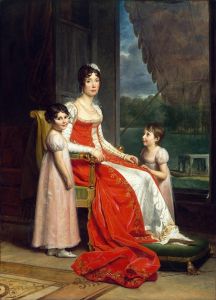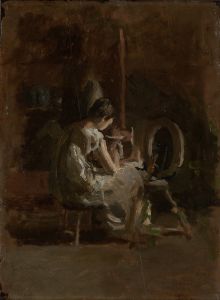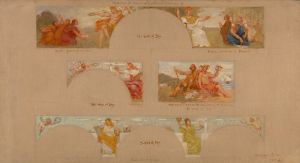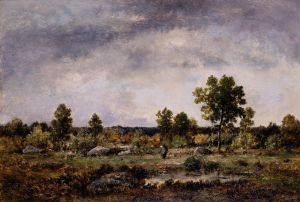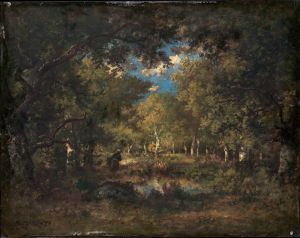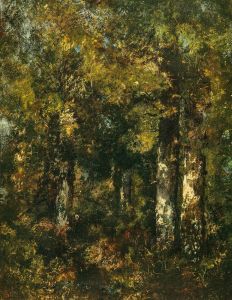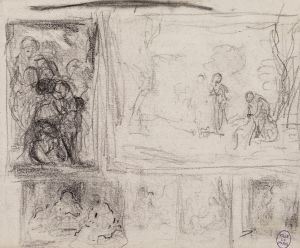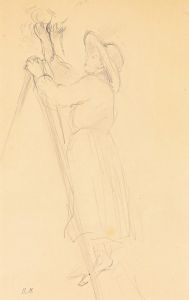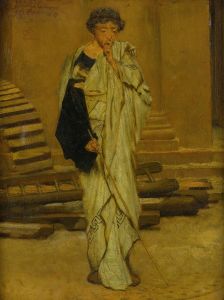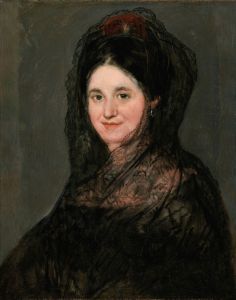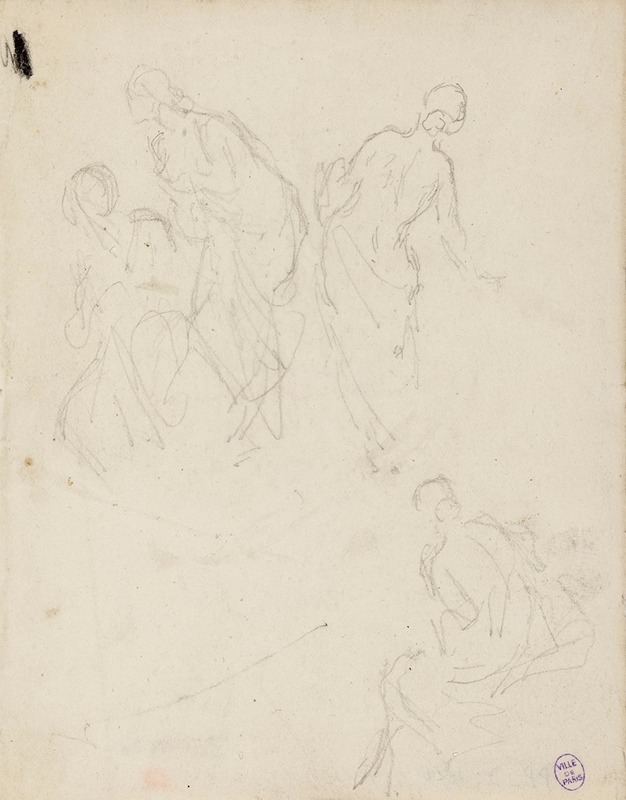
Quatre esquisses de femmes drapées
A hand-painted replica of Narcisse-Virgile Diaz de La Peña’s masterpiece Quatre esquisses de femmes drapées, meticulously crafted by professional artists to capture the true essence of the original. Each piece is created with museum-quality canvas and rare mineral pigments, carefully painted by experienced artists with delicate brushstrokes and rich, layered colors to perfectly recreate the texture of the original artwork. Unlike machine-printed reproductions, this hand-painted version brings the painting to life, infused with the artist’s emotions and skill in every stroke. Whether for personal collection or home decoration, it instantly elevates the artistic atmosphere of any space.
Narcisse-Virgile Diaz de La Peña, a prominent French painter of the 19th century, is known for his contributions to the Barbizon School, a movement that emphasized naturalism and the beauty of the French countryside. One of his notable works is "Quatre esquisses de femmes drapées" (Four Sketches of Draped Women), which showcases his skill in figure painting and his interest in the human form.
"Quatre esquisses de femmes drapées" is a series of four sketches that depict women in various poses, draped in flowing garments. The sketches are characterized by their loose, expressive brushwork and the delicate rendering of the fabric, which highlights Diaz de La Peña's ability to capture the texture and movement of drapery. The figures are presented in a classical style, reminiscent of the romantic and idealized forms often seen in the works of his contemporaries.
Diaz de La Peña's approach to these sketches reflects his broader artistic philosophy, which was influenced by both Romanticism and the emerging Realist movement. He often sought to convey the emotional and atmospheric qualities of his subjects, whether they were landscapes, figures, or genre scenes. In "Quatre esquisses de femmes drapées," this is evident in the way he uses light and shadow to create a sense of depth and volume, giving the figures a lifelike presence.
The sketches are believed to have been created during the mid-19th century, a period when Diaz de La Peña was actively involved with the Barbizon School. This group of artists, which included figures like Jean-François Millet and Théodore Rousseau, was dedicated to painting en plein air (outdoors) and capturing the natural beauty of the French countryside. While Diaz de La Peña is primarily known for his landscape paintings, his figure studies, such as "Quatre esquisses de femmes drapées," demonstrate his versatility and his keen interest in the human form.
Diaz de La Peña's work was well-received during his lifetime, and he exhibited regularly at the Salon, the official art exhibition of the Académie des Beaux-Arts in Paris. His ability to blend romantic idealism with a more naturalistic approach earned him a significant following, and his influence can be seen in the works of later artists who continued to explore the themes and techniques he pioneered.
Today, "Quatre esquisses de femmes drapées" is appreciated not only for its artistic merit but also as a representation of Diaz de La Peña's broader contributions to 19th-century French art. The sketches offer insight into his creative process and his ability to capture the subtleties of the human form with grace and sensitivity. As with many works from this period, the exact provenance and current location of the sketches may not be widely documented, but they remain an important part of Diaz de La Peña's artistic legacy.
In summary, "Quatre esquisses de femmes drapées" by Narcisse-Virgile Diaz de La Peña is a series of four sketches that exemplify the artist's skill in figure painting and his ability to convey the beauty and complexity of the human form. These works reflect his broader artistic philosophy and his contributions to the Barbizon School, making them a valuable part of 19th-century French art history.





